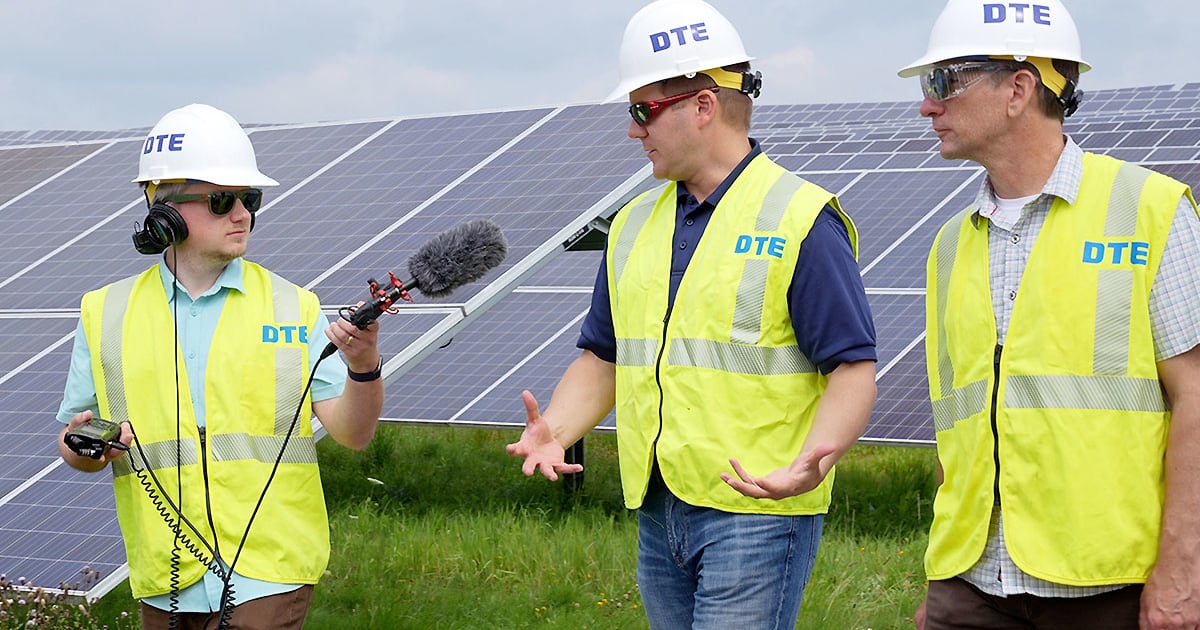
Driving through the plains of Ontario always reminds me of my home state of Iowa. A lot of it is agricultural. and the road can be numbingly straight.
But as Jake Neher and Jack Hallauer — two Michigan native colleagues — and I headed toward the Toronto exurb of Brampton to tour a Magna International plant, I experienced something I never felt in Iowa: a burning in my throat from wildfires.
This past summer, locales from Chicago to New York were canceling outdoor activities because of the Ontario forest fires and the heavy smoke hanging over large swaths of North America.
Those fires were not global warming; a hot day in August is not climate change. But the accumulation of years of progressively hotter temperatures throughout the world provides ample evidence of a real problem. In the words of the Intergovernmental Panel on Climate Change, “the influence of human activity on the warming of the climate system has evolved from theory to established fact.”
Is the auto industry to blame for climate change? Not entirely, but it’s clearly had a role in the human behavior that has propelled the amount of carbon dioxide in the atmosphere to unprecedented levels.
As podcast producer Neher put it in one episode of “Driving to Zero,” a new limited series podcast on the auto industry’s efforts to achieve carbon neutrality:
“Here in the United States, there are three sectors that contribute far and away the most to CO2 emissions: transportation, energy and industry. As of 2021, they represented 28 percent, 25 percent and 23 percent of U.S. emissions respectively. Three industries — three-quarters of our carbon emissions as a country. And if you were to draw a Venn diagram of those three sectors, the auto industry would sit right smack dab in the middle. And experts say that’s why it’s critical for automotive companies to take a lead role in cutting carbon.”
In fact, automakers and their suppliers are spending billions and billions of dollars to reduce carbon emissions — to make the industry sustainable into and through whatever climate change may come. That doesn’t just mean putting in bigger air conditioners in cars. It means addressing the sources of global warming, which is excess carbon emissions throughout the value chain and the life cycle of the vehicles that the industry produces.
One might think that a massive transformation like this would be the product of government mandates. And it is — in Europe and in China. In the U.S., while the federal government – and some states — support clean manufacturing and zero-emission vehicles, the influence is almost all in the form of positive reinforcement. Carrots, not sticks.
Not that the government isn’t a stakeholder or that it doesn’t have a role. But the demand for automakers to change what they make and how they make it has come very little from regulators and primarily from investors, consumers, neighboring communities where factories are located and the employees who work there.
The auto industry is in a difficult transition period from decades of mostly profitable production and distribution of gasoline-burning vehicles to an industry predominantly defined by battery-powered electric vehicles, most of which don’t yet generate a profit.
The companies can see the demand for EVs that will truly meet consumers’ needs. EVs need to get from point A to point B. They need to be stylish and fashionable. And they need an economic value. The economics aren’t all there yet, but if and when the cost of materials and production to make an EV matches or even gets close to that of a comparable gasoline powered vehicle, the consumers will swiftly pursue the opportunity to spend less of our most precious commodity — time — filling up the gas tank and getting the oil changed.
Yes, there are time-related challenges in the current state of the EV industry: most notably around charging — and the lack of availability or reliability. That is a problem that has to be solved — and one that is being addressed.
I know there will be readers who are outraged that Automotive News would be so “woke” as to report on carbon-neutrality efforts.
But keep in mind: We are not the ones investing hundreds of billions of dollars in carbon reduction. This is coming from the world’s biggest automakers, the world’s smallest automakers, the world’s biggest suppliers and any number of their smaller peers. It’s also coming from consumers and, yes, from governments.
We are reporting on this because it’s a major trend in the industry. Our job is to report what is happening, so that you all know it and can act accordingly. And there’s a lot happening, which is good, because there are a lot of hurdles to clear. In battery technology, in battery manufacturing, in mining and refining, in the powering of the factories and vehicles.
We as humans can reduce the damage that we are doing to our planet, and the auto industry is actively engaged in that process. This podcast series is about explaining what the industry is doing, why it’s doing it and how it’s doing it. This is your peek behind the curtain. Enjoy.